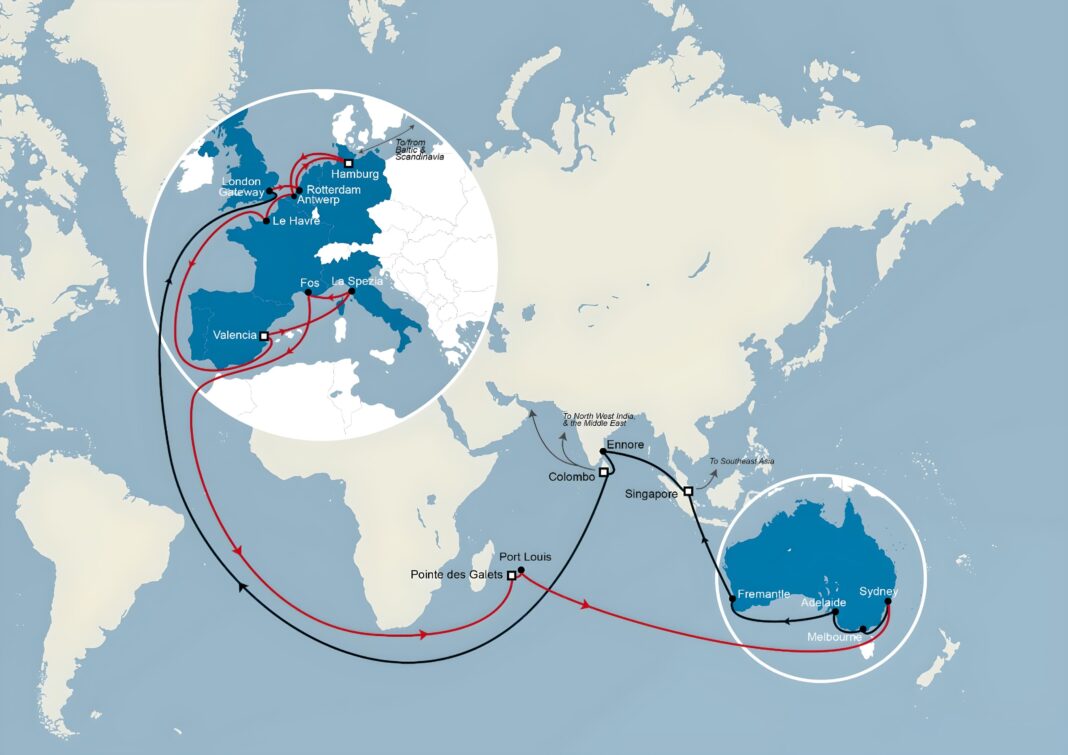More than 30% of timber imported through Australia’s busiest seaport is now at risk of being tied up in the Red Sea conflict – which has already seen more than US $200 Billion work of cargo sail through the Cape of Good Hope to avoid the Suez Canal.
Earlier this month, Wood Central exclusively revealed that global timber was amongst the industries most impacted by the crisis, with the world’s big six traders, including China, Canada, Russia, Sweden, Germany and the US, using the thoroughfare the cycle timber through global markets.
The trade from these countries amounts to about 70% of the global trade in timber products. And with the recent deaths of two US Navy Seals in the passage, the risk of a prolonged conflict (and with it, delays in supply and potentially increased prices for timber imports) is growing by the day.
Already, the impacts of the blockade are filtering through to Australian supply chains for timber products. As reported by the Urban Developer this morning, more than 32% of sawn timber arriving through the Port of Melbourne came from Europe via the Suez Canal – and of the 3.23 million TEU (Twenty-Foot Equivalent Unit) containers that at the port every year, 13% come from Europe.
Wood Central understands that this includes a large share of timber beams and cross-laminated timbers, which are fuelling new timber buildings across Australia.
Interest in cross-laminated timber is booming, with Wood Central last year reporting that the Australian and NZ market is surging – and whilst Australian manufacturers (and NZ) are now lifting production to meet demand, the market is still familiar with predominantly European imports.

This afternoon, Wood Central spoke to an Australian-based mass timber manufacturer who said, “Australia has enough capacity and supply to supply any shortfalls – but merchants typically keep enough to make up for any short-term supply delays.”
“Experienced installers and builders understand a major benefit of mass timber is in speed of installation,” they said.
“If mass timber delivery is delayed, it impacts the building’s critical path – so importers have to warehouse timber to overcome this. When you warehouse timber, you must consider all overheads associated with that.”
Before the crisis, more than 40% of Asia-Europe trade transited through the passage, with new routes adding up to $1.5 million in fuel and weeks to round trips.
According to Xeneta, an Oslo-based global ocean and air freight analytics platform, the rates for shipping containers between Europe and Asia-Pacific have risen by 243 per cent since the Red Sea crisis escalated in mid-December and will likely rise again in February.
“Carriers are trying to readjust services to make up for additional sailing time around the Cape of Good Hope,” according to Xenta’s chief analyst, Peter Sand, adding that “they are now cutting journeys short, missing port calls and increasing sailing speed.”
The world’s largest freight carriers, including the Swiss-Italian firm Mediterranean Shipping (MSC), Denmark’s Maersk, France’s CMA CGM and Germany’s Hapag-Lloyd — have already driven up container shipping rates between Europe and Australia.
Last week, Maersk told customers that diverting ships around the Horn of Africa was “necessary in the interest of safety, but it has ultimately increased costs for carriers”.
“As such, Maersk is invoking Clause 20(a) of the Terms for Carriage and Clause 22(a) of the House Bill of Lading (whichever is appropriate to the relevant carriage) to recover these costs.”
CMA CGM, the world’s second-largest shipper by market share, announced earlier this month that it would double its rates for shipping from Asia to Europe.
In addition to timber products, several building materials – including lifts, exterior cladding, laminated floors, tiles, marbles, exotic stones, and carpeting- are also tied up in the crisis.
But what is saving Australia, for the time being at least, is that the country’s biggest suppliers of construction materials are China, the US and Southeast Asia.
“We’ve not seen any great volatility come through yet due to what is happening in the Red Sea,” according to Barry Laycock, a director with cost management and quantity surveying practice Slattery.
“And I’m not surprised by that,” he says. “A lot of our supply chain comes from Asia.”
“Until we become heavily reliant on European components, I’m not sure it will necessarily shift the bar in terms of pricing.”
- For more information about the implications of the Red Sea Crisis on Global Timber Supply Chains, read Wood Central’s special feature.






